Close-ups : 50
-
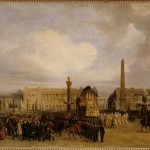 Close-upThe “Retour des Cendres”: Napoleon’s body is returned to Paris“It is my wish that my ashes may repose on the banks of the Seine, in the midst of the French people, whom I have loved so well.” This is the most quoted sentence from Napoleon’s last will and testament. (The old term ‘ashes’ means ‘mortal…
Close-upThe “Retour des Cendres”: Napoleon’s body is returned to Paris“It is my wish that my ashes may repose on the banks of the Seine, in the midst of the French people, whom I have loved so well.” This is the most quoted sentence from Napoleon’s last will and testament. (The old term ‘ashes’ means ‘mortal… -
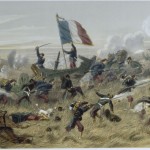 Close-upThe “Franco-German” War of 1870-1871
Close-upThe “Franco-German” War of 1870-1871This Close-up deals with aspects of the conflict between France and Prussia, the latter allied with the North German Confederation and other German states in the South. We have decided to refer to this adversary – composed of several political entities – as “German”. Indeed, one of the main consequences of this conflict was the […]
-
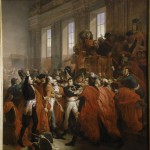 Close-upThe coup d’État of 18 Brumaire An VIII (9 and 10 November 1799)
Close-upThe coup d’État of 18 Brumaire An VIII (9 and 10 November 1799)In 1795 the Directory succeeded the Thermidorian Convention, the regime that followed the downfall of Maximilian Robespierre and his Reign of Terror. The new regime was structured in the following way: an executive body of five directors with two legislative houses – a Council of Anciens, and a Council of Five Hundred. This separation of […]
-
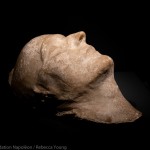 Close-upNapoleon’s death maskEver since the death of the French Emperor on the island of St Helena on 5 May 1821, Napoleon’s death masks have presented one of the most complex and fascinating mysteries related to the minor Corsican noble who ended up ruling much of Western Europe.…
Close-upNapoleon’s death maskEver since the death of the French Emperor on the island of St Helena on 5 May 1821, Napoleon’s death masks have presented one of the most complex and fascinating mysteries related to the minor Corsican noble who ended up ruling much of Western Europe.… -
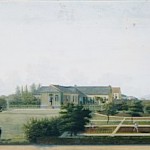 Close-upLongwood House and Napoleon’s Journey to St Helena
Close-upLongwood House and Napoleon’s Journey to St Helena2010 – 2014 “SAVING NAPOLEON’S HOUSE ON ST HELENA” The “Domaines Français” of St Helena belong to the French Ministry of Foreign Affaires, and are composed of three areas: Longwood House and the “Domaine de la Tombe” (which were bought by France in 1858) and the “Pavillon des Briars” (which was given to France by […]
-
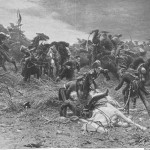 Close-upBlücher and the Waterloo campaignThe Prussian army’s role in the Battle of Waterloo (or the Battle of Belle-Alliance, as they named it) has often been underestimated. This dossier offers a close-up on the German cultural hero Blücher and the composition and whereabouts of his troops between March and June 1815.
Close-upBlücher and the Waterloo campaignThe Prussian army’s role in the Battle of Waterloo (or the Battle of Belle-Alliance, as they named it) has often been underestimated. This dossier offers a close-up on the German cultural hero Blücher and the composition and whereabouts of his troops between March and June 1815. -
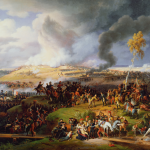 Close-upNapoleon’s Russian Campaign – 2 – from the Niemen to MoscowHaving crossed the rubicon (or in this case the Niemen), the ‘Army of Twenty Nations’ set about bringing Alexander to heel. The Russian camp hastily built Drissa was soon abandoned, and Alexander’s forces began their celebrated ‘Fabian’ tactic, refusing to give battle and continuously retreating,…
Close-upNapoleon’s Russian Campaign – 2 – from the Niemen to MoscowHaving crossed the rubicon (or in this case the Niemen), the ‘Army of Twenty Nations’ set about bringing Alexander to heel. The Russian camp hastily built Drissa was soon abandoned, and Alexander’s forces began their celebrated ‘Fabian’ tactic, refusing to give battle and continuously retreating,… -
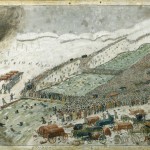 Close-upNapoleon’s Russian Campaign – 3 – the retreatAfter victory at Borodino, Napoleon expected a glorious arrival in Moscow and a swift end to his Russian Campaign. However, the Russians were not about to make peace, forcing the Emperor into an ill-planned retreat. Despite the amazing feat at the Berezina, the increasingly precarious position…
Close-upNapoleon’s Russian Campaign – 3 – the retreatAfter victory at Borodino, Napoleon expected a glorious arrival in Moscow and a swift end to his Russian Campaign. However, the Russians were not about to make peace, forcing the Emperor into an ill-planned retreat. Despite the amazing feat at the Berezina, the increasingly precarious position… -
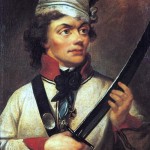 Close-upThe Duchy of Warsaw
Close-upThe Duchy of WarsawThe Duchy of Warsaw was created by Napoleon in July 1807 and was seen by the Poles as a sign of a future restoration of their nation. This, however, was not to be, as the Duchy ceased to be with the fall of the French Empire. Its fate was decided at the Congress of Vienna; […]
-
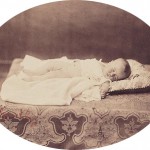 Close-upThe Prince Imperial
Close-upThe Prince ImperialThis dossier brings together textual and iconographic sources about the life and death of the Prince Imperial, Louis Napoléon (1856-1879).

